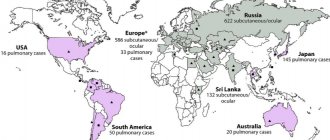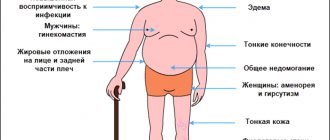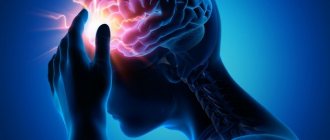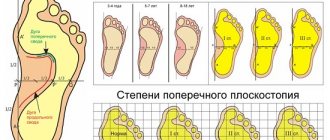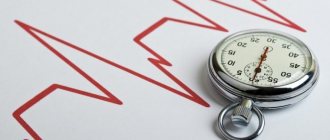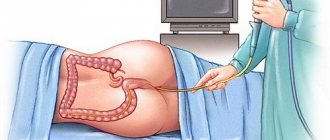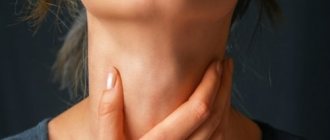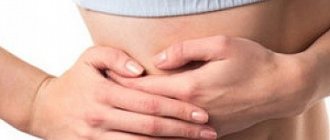Signs of a heart attack in a person
Death due to a heart attack is now one of the most common.
It comes quickly and often unpredictably. It may take several minutes after the first symptoms appear until death occurs. Such speed and inexorability are the main reasons for the worldwide attempts of doctors to study this disease and try to bring it under control. Moreover, more and more people under 40 years of age are at risk.
The signs of a heart attack in women should not be confused with others. It is important to know how to recognize a heart attack in order to help a loved one or passerby in time.
Action will have to be taken and it needs to be done correctly.
What to do
If symptoms of a heart attack are observed in women, it is not enough to know how to act in such a situation. It should be remembered that it is strictly contraindicated:
- stand up or move around;
- smoke;
- drive;
- use aspirin if there is intolerance to the drug or an exacerbation of gastritis or ulcers is diagnosed;
- take nitroglycerin in case of low blood pressure, severe headaches, problems with speech, coordination, or vision;
- consume drinks or food.
First of all, you need to be more attentive to the signals of your body and, if warning signs of illness appear, consult a doctor for diagnosis and treatment. If you suspect a worsening of the condition, call an ambulance immediately. Even if the alarm was false, it will not cause much harm, and in the event of a real heart attack, the patient must be immediately sent to the hospital, where the cardiologist has only a few minutes to open the artery and provide assistance, preventing serious consequences.
First aid
Timely emergency actions in the event of a heart attack can be decisive in the patient’s life:
- Calling an ambulance is the first thing you need to do immediately.
- Lay the sick person down with his head raised.
- Unfasten the belt, collar, loosen the tie, which will help relieve suffocation.
- Provide air access to the room.
- Give an aspirin tablet, if it is not contraindicated, and nitroglycerin under the tongue (take no more than three tablets in total if the pain does not subside).
- If severe weakness appears, raise your legs to a level above your head, give them water to drink and no longer give nitroglycerin.
- You can put mustard plaster on your chest.
- Do not leave the patient until the doctor arrives.
- The doctor must show all medications taken.
What is a heart attack?
A heart attack is a serious condition that occurs as a result of a problem with blood supply after obstruction of one of the heart arteries.
The consequences of this pathology are usually irreversible, which is why it is important to be able to distinguish this most dangerous condition in the first stages of its manifestation.
All about the causes and prevention of acute heart failure
Heart failure is an acute or chronic pathology in which the heart is unable to cope with its function - distributing blood throughout the body.
Heart failure is not an independent disease; it develops as a complication of cardiac and vascular pathologies. The disease affects representatives of both sexes at any age. But if at a young age the disease occurs in less than 2% of the population, then in people over 75 years of age the prevalence of the pathology reaches 10%.
Acute heart failure can complicate the course of many diseases or conditions; its causes and development mechanisms are different.
Causes include the following: decompensation of chronic heart failure, acute myocardial infarction, mechanical complications of acute myocardial infarction (for example: ventricular septal rupture, mitral valve chordae rupture, right ventricular infarction), right ventricular myocardial infarction, rapidly progressive arrhythmia or severe bradycardia, acute thromboembolism pulmonary artery, hypertensive crisis, cardiac tamponade, aortic dissection, labor cardiomyopathy, obstruction of blood flow (narrowing of the aortic orifice and mitral orifice, hypertrophic cardiomyopathy, tumors, blood clots), valvular insufficiency (mitral or aortic), dilated cardiomyopathy, myocarditis, cardiac injury.
Non-cardiac causes include: infections, especially pneumonia, sepsis, poor adherence to treatment, volume overload, severe stroke, surgery and perioperative problems, renal dysfunction, exacerbation of bronchial asthma, chronic obstructive pulmonary disease, anemia, drugs (non-steroidal anti-inflammatory drugs, corticosteroids). , drug interactions), hypo- or hyperthyroidism, alcohol abuse and drugs.
Symptoms are varied and depend on the causes of the disease and the degree of dysfunction of the left or right ventricles. Depending on the main symptoms, acute heart failure is divided into left and right ventricular failure; in some situations, right and left ventricular failure may occur simultaneously (biventricular failure).
Biventricular failure occurs during myocardial infarction with damage to the right and left ventricles, with mechanical complications of acute myocardial infarction (rupture of the interventricular septum), myocarditis, etc.
The main cause of acute left ventricular failure is dysfunction of the left ventricular myocardium (myocardial infarction, hypertensive crisis, cardiac arrhythmia). The following symptoms are characteristic: increasing shortness of breath, worsening in a lying position, up to suffocation. The extreme manifestation of acute left ventricular failure is cardiogenic shock.
Acute right ventricular failure occurs with pulmonary embolism, right ventricular myocardial infarction, cardiac tamponade, and status asthmaticus. Main symptoms: swelling and increased pulsation of the neck veins, edema, enlarged liver.
Considering the above, the main signs of acute heart failure are: heavy, rapid breathing (more than 24 per minute), noisy breathing - shortness of breath, even suffocation. A clear increase in shortness of breath and cough in a horizontal position.
A sitting position and a position with the head of the bed raised alleviates the patient's condition. When breathing, moist wheezing becomes audible, interrupted by coughing; in the terminal stage, foam appears at the mouth. The position of the patient resting his straight arms on his knees or sitting to facilitate breathing.
Heart failure can develop very quickly and within 30-60 minutes lead to the death of the patient.
The main goal of treatment is to quickly stabilize the condition and reduce shortness of breath. The best treatment results are achieved in specialized emergency departments.
Oxygen therapy (inhalation of humidified oxygen); in severe cases, respiratory support and artificial ventilation may be required.
Drug treatment: morphine is indicated at the early stage of acute heart failure, especially in the presence of pain and agitation of the patient; nitro drugs are started before the ambulance arrives, then intravenous administration is continued.
Depending on the severity, other drugs may be used at the initial stage: venous vasodilators (sodium nitroprusside, nesiritide), diuretics (loop, thiazide-like), intropic drugs that improve cardiac muscle contraction (dobutamine), vasopressors (dopamine). Drugs for the prevention of thromboembolic complications (anticoagulants).
Some diseases underlying heart failure require emergency surgery. Possible surgical methods include: myocardial revascularization, correction of anatomical defects of the heart (valve replacement and reconstruction), mechanical means of temporary circulatory support (intra-aortic balloon counterpulsation).
The next stage of treatment after stabilization of the condition includes the appointment of angiotensin-converting enzyme inhibitors (ACEIs) or angiotensin receptor blockers, beta-blockers, mineralocorticoid receptor antagonists.
Before discharge, it should be ensured that the acute period of heart failure has resolved and a stable regimen of diuretics has been established for at least 48 hours.
The average length of hospital stay is 10-14 days. Continue treatment (including beta blockers, ACE inhibitors or angiotensin receptor blockers, mineralocorticoid antagonists) on an outpatient basis.
After discharge from the hospital, patients are observed by a cardiologist at their place of residence. Timely correction of therapy, dynamic ECG, ECHO-CS, as well as monitoring of laboratory parameters (electrolytes, creatinine, pro-BNP) help reduce the number of patient hospitalizations and improve the patient’s quality of life.
The doctor will also give specific recommendations on diet, level of physical activity, explain the need to take medications, pointing out possible side effects, and note conditions the occurrence of which should alert the patient.
Diet: Limit fluid to 1.5–2 L/day to reduce symptoms and fluid retention. Weight-based fluid restriction (30 ml/kg body weight, 35 ml/kg if body weight >85 kg) may reduce thirst and monitor and prevent malnutrition.
Eating healthy foods: limiting animal fats in favor of eating poultry, fish (preferably sea), but no more than 2 times a week, fresh vegetables, fruits, herbs, seafood;
Be sure to control your weight. If you gain more than 2 kg in 3 days, consult a doctor.
Quitting smoking and drug use is mandatory, and moderate alcohol consumption is possible (complete abstinence is recommended in patients with alcoholic cardiomyopathy). In other cases, the following rule may apply: 2 units of alcohol per day for men and 1 unit per day for women (1 unit = 10 ml of pure alcohol, for example 1 glass of wine).
Daily physical activity is required, aerobic physical activity 30 minutes a day according to the condition (walking in the fresh air, Nordic walking).
Immunize against influenza viruses and pneumococcal infections, as any viral or bacterial infections can worsen the condition.
Monitor and adapt fluid intake when traveling, particularly during flights and in hot climates. Beware of adverse reactions from sun exposure when taking certain medications (eg, amiodarone).
Individual recommendations are also given, the doctor informs the patient about the possible side effects of the prescribed medications.
Before answering the question: “How to recognize heart failure?”, it is worth considering the mechanism of development of the disease.
The pathogenesis of heart failure can be described as follows:
- under the influence of unfavorable factors, the volume of cardiac output decreases;
- to compensate for insufficient output, compensatory reactions of the body are activated (thickening of the myocardium occurs, increased heart rate);
- for some time, compensation processes make it possible to ensure adequate blood supply to organs and tissues due to the work of the organ with increased load;
- but the myocardium, which has increased in size, requires a larger volume of blood to function properly, and the coronary vessels can transport only the same volume of blood and cease to cope with providing the muscle with nutrients;
- insufficient blood supply leads to ischemia of certain parts of the heart and the contractile function of the myocardium decreases due to lack of oxygen and nutrients;
- as the contractile function decreases, the cardiac output decreases again, the blood supply to the organs deteriorates, and signs of heart failure increase (the pathology becomes incurable, you can only slow down the progression of the disease).
Symptoms of heart failure may develop:
- Slowly. Chronic heart failure (CHF) progresses over years and often occurs as a complication of heart or vascular disease. In most cases, CHF detected in a timely manner at an early stage is reversible.
- Fast. Acute heart failure occurs suddenly, all symptoms increase rapidly and compensatory mechanisms often do not have time to stabilize blood flow. If acute violations that have arisen are not corrected in a timely manner, they will end in death.
Having understood what heart failure is, we can consider how it manifests itself.
Cardiologists classify chronic heart failure according to:
- stages of development of the compensatory mechanism;
- phases of contractile dysfunction.
What can cause a heart attack?
As a rule, people who have any abnormalities in the cardiovascular system, congenital pathologies, or have suffered complications after surgical interventions in this area are susceptible to heart attacks.
A special risk group is the elderly.
Due to natural age-related changes towards aging, they are most often exposed to heart attacks (men, according to statistics, suffer from heart attacks more often than women).
Other reasons that can provoke the onset of a pathological condition: atherosclerosis, angina pectoris, abuse of anabolic steroids (a very common cause in athletes involved in building muscle mass), diabetes.
A sedentary lifestyle, especially with poor nutrition, also increases the risk of a heart attack. The territorial location of a person’s place of residence significantly influences the possibility of heart failure.
A hot, dry climate and dry periods have a detrimental effect on people’s blood pressure and cardiovascular system.
This is especially true for people of retirement age. They are recommended, if possible, to move to more favorable areas for living.
Separately, it is worth highlighting “voluntary” ways to get a heart attack. These include extremely common bad habits in our time: drug addiction, alcohol addiction, smoking.
In smokers, heart abnormalities and attacks occur almost constantly. Alcohol abusers risk worsening existing heart problems due to the harmful effects of alcohol poisons on the body.
Attacks after heavy drinking, especially in the heat, are common. Once taken, narcotic substances have a depressing effect on the center responsible for the functioning of the heart and blood vessels.
The pulse slows down and blood pressure decreases. As a result, severe oxygen starvation occurs and the heart muscle stops working properly.
Another group of drugs, on the contrary, raises blood pressure.
Symptoms
Among women
However, there are other causes that provoke a heart attack that can be eliminated or their negative impact on the body can be negated.
These factors are:
- Smoking, alcohol addiction, drug addiction. These factors come first. Smokers are almost always diagnosed with heart disease. Alcohol intoxication worsens the situation several times. Often an acute attack occurs in a state of deep hangover.
- Taking birth control pills. Sometimes this factor leads to the appearance of pathology in women who have not even reached 40 years of age.
- High cholesterol content. Vessels clogged with plaques experience serious overload. Of course, the heart does not receive enough blood. He has to function in an enhanced mode.
- Obesity. Organs swollen with fat do not allow the myocardium to work at full capacity. This is a fairly common cause leading to cardiac disorders.
- Inactivity. As a rule, this factor is combined with obesity or overweight.
- Hypertension. High blood pressure overloads the heart muscle and blood vessels.
- Diabetes. This is a pathology that provokes many different disorders in the body. The cardiovascular system also suffers from the disease.
- Inflammatory processes in blood vessels. They provoke rupture of the coronary artery. Inflammation causes an increase in reactive protein in the body. This picture is most often observed in women. Doctors are not yet ready to say what causes the increase in protein.
- Hypothyroidism. The disease often becomes a source of heart disease. It can trigger an attack.
- Chronic stress. This condition is the cause of the development of most diseases in the body. And first of all, stress negatively affects the functioning of the heart.
What are the symptoms of a heart attack and how to recognize it?
In order to immediately take measures to save the life and health of the victim, it is important to be able to distinguish the signs of a heart attack from other abnormalities with similar symptoms.
It is noteworthy that heart symptoms differ between men and women.
The main reason to identify an attack and urgently call an ambulance is acute pain in the chest area. Drugs (nitroglycerin) do not relieve it.
A person is unable to breathe normally due to severe pain. The victim begins to experience oxygen starvation with signs of suffocation.
The danger is not pronounced symptoms, such as shortness of breath. It can occur in a person either at rest or after any physical activity. They may not pay attention to her, citing fatigue, overwork, or “age.”
They confuse her with medications and forget about her. You can't do that. Any breathing problems, pain in the chest area, burning sensations and other unusual phenomena should be the basis for a visit to a doctor and an examination of your body.
In addition to the bright, alarming symptoms mentioned above, there are others that are difficult to associate at first glance with “heart symptoms”.
Vomiting and nausea begin. After vomiting, the patient does not experience the usual relief in this case. On the contrary, the condition is only getting worse. Brain disturbances (dizziness, panic attacks, fainting) are frequent accompaniments of an impending heart attack.
It is worth paying attention to such seemingly harmless conditions as sudden night snoring and excessive sweating of the extremities.
How to treat the disease?
If the disease occurs unexpectedly and occurs in an acute form, you must immediately call an ambulance. Only a specialist can competently stop an attack. Treatment of heart failure consists of several basic principles:
- the use of angiotensin-converting enzyme inhibitors. These are drugs that regulate blood pressure. For women, the use of Ramipril and its analogues is more often recommended.
- Use of diuretics. These are diuretics. They will help relieve swelling and increased stress on the ventricles of the heart.
- Use of medications belonging to the group of beta-blockers. They help restore the normal flow of blood from the cavities of the heart.
- Use of cardiac glycosides. Such drugs help restore normal functioning of the heart muscle.
- Taking anticoagulants. These drugs prevent the risk of thrombosis.
- Moderate physical activity. Slow walks in the fresh air will be a good cardio workout. Breathing exercises have a good effect.
- Taking vitamin-mineral complexes. Such products will help replenish nutrients and strengthen the immune system.
- Maintaining a proper diet. You will have to remove all smoked foods, meat dishes, fried and excessively fatty foods from the daily menu. You need to give up chocolate and alcoholic drinks. The emphasis should be on foods containing large amounts of potassium. These include: oatmeal, buckwheat porridge, dried apricots, bananas, Brussels sprouts and others. Try to eat as many fresh fruits and vegetables as possible. They will help saturate the body with vitamins, which will give it strength to fight the disease. Sometimes experts recommend vitamin or protein diets. You need to eat small meals five times a day.
- Proper sleep. Adequate rest is the key to successful treatment. In order to prevent the appearance of severe swelling, it is necessary that the head is slightly elevated during sleep. To do this, use special beds with a raised top or simply high pillows. If a woman is bothered by severe swelling in her legs, then she needs to elevate her limbs while resting.
- In particularly severe cases, surgery may be indicated. The patient is fitted with a cardiac pacemaker, which helps the heart cope with its functions.
Specific drugs and their dosage are selected exclusively by the attending physician based on the woman’s health condition and the severity of the disease. The prescribed dosages must be strictly followed. Otherwise, you can worsen the course of the disease.
If the disease is complicated by diabetes, hypertension, gastritis or other concomitant diseases, then it is necessary to treat them simultaneously. To eliminate the symptoms of heart failure, for example, shortness of breath or edema, it is allowed to use traditional medicine. But this can only be done under the supervision of a specialist.
Heart failure is a serious disease that requires timely treatment. Only by identifying the symptoms in time can you avoid serious health consequences. If the disease develops into a chronic form, you will need to take certain medications for life and undergo regular medical examinations.
Source: MirKardio.ru
Symptoms of a heart attack in women
Certain symptoms of heart failure in women are often less pronounced than in men. This leads to the fact that the mortality rate from this disease is higher in women than in men.
What do the first symptoms of impending trouble look like for women? What will be the differences from male manifestations? How to protect yourself, mother, grandmother?
For women, the main risk factors will be:
- age over 55 years;
- bad heredity in a person;
- consequences of difficult menopause;
- surgical interventions to remove internal reproductive organs;
- severe hypertension.
Long-term use of hormonal contraceptives can cause failure and harm the heart. Women under 40 are at risk.
Other reasons for the development of pathology: poor, monotonous diet, lack of heart-healthy foods.
A large amount of fatty foods containing cholesterol leads to blockage of blood vessels and the heart cannot be fully supplied with blood. Excess fat on internal organs does not allow the heart to function normally and causes wear and tear and overload.
Heart pathologies can also begin with prolonged depression and stress, which are common in the modern world.
What should you be wary of first?
The alarming signals that the female body gives include: severe weakness, fatigue, literally knocking you down. Then, insomnia or nighttime panic attacks foreshadow a heart attack about a month before it occurs.
Factors causing myocardial infarction in young people
The main factor in the occurrence of pathology in both elderly and young men is atherosclerosis of the coronary vessels that supply the heart muscle. But in young people there are other factors that precede a dangerous disease.
Young and middle-aged men suffer from this disease more often than women. Men move less, suffer from excess weight and obesity, which is dangerous for young people, smoke, tend to sort things out, and are subject to stress. All this predisposes to the occurrence of atherosclerosis, hypertension, coronary heart disease, and arrhythmia.
Another factor predisposing to a heart attack at a young age is considered to be a blood clotting disorder. This is often observed in women at a young age; due to the use of oral hormonal contraceptives to protect against pregnancy, they may develop coronary thrombosis.
There are also unforeseen rare causes of heart attack - dissection, when a coronary vessel spontaneously ruptures. Most often this leads to death. Dissection may progress in women during or immediately after childbirth.
Another possibility of having a heart attack at a young age is the use of drugs, especially cocaine.
Many scientific studies are aimed at elucidating the causes of myocardial infarction in young people, in particular the relationship between blood clotting disorders and the development of heart attack at a young age. Research conducted on this topic has revealed confirmation of these facts. Therefore, young patients who have suffered a heart attack are recommended to undergo a thorough medical examination to prevent relapse.
According to statistics, only half of patients with an acute attack of myocardial infarction survive to arrive at the hospital, and after receiving assistance from complications, another third dies before being discharged. Young patients who have had a myocardial infarction have a lower mortality rate than older patients, even after taking into account 10-year survival. Although the risk of recurrent heart attack in young patients is as high as in older ones. Atherosclerosis in young people is more aggressive.
Smoking and alcoholism have a detrimental effect on blood vessels, which leads to recurrent heart attacks in young people. Smoking and alcohol increase blood pressure, contributing to the development of hypertension, affect metabolism, and this increases the deposition of cholesterol on the walls of blood vessels. Nicotine and alcohol negatively affect the body, the process of intoxication occurs, which reduces its resistance to any diseases.
The causes of heart attack in women at a young age may be arterial hypertension, hyperlipidemia or heredity
Today, doctors are confident that in some cases, the prerequisites for the development of atherosclerosis appear at a young age. Fibrous plaques, which can be observed in young people, sometimes occur even in children 10-15 years old. They are concentrated in the aorta in approximately 10% of patients, and in the coronary arteries in 18%. It turns out that young people often experience an atypical course of atherosclerosis affecting the coronary vessels.
The earlier diagnosis is made and timely medical care is provided, the more likely it is to prevent the development of cardiac diseases and increase life expectancy.
Symptoms of heart attack in men
Diseases associated with the cardiovascular system claim the lives of men most often.
Who needs to be extremely careful?
Firstly, for people over 50 years old, and secondly, for those with bad habits (smoking, alcoholism, drug addiction).
Men employed in jobs with a lot of stressful situations and in positions with a high mental level are also susceptible to heart attacks. Teachers, professors, theater actors, doctors are always under threat.
Men should always undergo routine medical examinations (especially those suffering from high blood pressure or diabetes) and take care of their nerves.
What do the symptoms of a heart attack look like in men?
If you experience unexpected acute pain in the chest or problems with breathing air, you need to urgently call an ambulance. Sudden nausea, icy sweat and pain in the left arm should also alert you.
Long-term symptoms include prolonged weakness, fatigue and insomnia.
First aid will consist of calling doctors, and the dispatcher on the phone will tell you what you can take.
Help a loved one
What should you do if you see something wrong with a person and you suspect he is having a heart attack?
Symptoms in women and treatment are often taken lightly by such individuals. Therefore, be prepared for the fact that they will begin to refuse to call the doctor and protest against the need to take a horizontal position.
Your actions should be as quick and clear as possible:
- Call an ambulance.
- Lay the patient on a horizontal surface, placing any object under his feet. Make sure that the patient does not get up.
- Unfasten your collar and belt.
- Provide fresh air by opening a window. Turn on the fan.
- Try to calm and encourage the victim.
Be sure to complete all the activities described above. And remember that the future life of this person depends on your actions.
Source: FB.ru
Heart attack
- Chest pain
- Dizziness
- Respiratory failure
- Burning behind the sternum
- Inability to breathe deeply
- Lack of air
- Dyspnea
- Swelling of the legs
- Loss of balance
- Sweating
- Panic attacks
- Vomiting without relief
- Nausea
- Suffocation
- Snore
- Feeling of heaviness in the chest area
Heart attack is one of the most common causes of death among men and women. A heart attack is a sudden disruption of blood circulation, with the development of subsequent necrotization in the myocardial layer of the heart. This pathology can have a lightning-fast course - when from the time the first symptoms appear, death occurs within a few minutes.
Usually the consequences of this disorder are irreversible, so it is extremely important to recognize a heart attack in the early stages and provide effective first aid. Treatment of the pathology is aimed at preventing the development of relapses.
What happens during a heart attack
Signs of a heart attack appear when one of the arteries that supply the myocardium ceases to function normally and deliver the required volume of blood.
Thus, during a heart attack, part of the heart is damaged, that is, a local area of muscle tissue suffers. If urgent measures are not taken, death is quite possible. Statistics say that approximately half of deaths due to a heart attack come from seeking medical help too late or the impossibility of providing it in a timely manner.
The pathological condition develops when the blood flow of the vessels leading to the heart is disrupted due to a sudden spasm or unexpected blockage by a blood clot or cholesterol. The reason for the death of a muscle section is a lack of oxygen.
As a result, death occurs due to extensive damage to the heart muscle and complications that arise. If urgent measures can be taken, the patient can often be saved.
Causes of pathology
Often, a heart attack develops against the background of cardiac pathologies that a person has. In particular, the predisposing factor leading to the occurrence of this disorder in the heart is atherosclerosis.
In addition, disturbances in the functioning of the heart occur in older people, which is associated with functional disorders in the functioning of the cardiovascular system. Moreover, pathology is determined more often in men than in women.
Angina often becomes a “provoker” of a heart attack, and is characterized by impaired respiratory function (suffocation), as well as changes in heart rhythm and severe pain. Smoking and excessive physical activity are predisposing factors to the development of angina.
Also, a disorder such as a heart attack often results from:
- decompensated diabetes;
- long-term use of nonsteroidal drugs;
- lack of adequate physical activity;
- dysmetabolic syndrome.
Causes
The key factor in the developing necrosis of part of the myocardium is atherosclerotic damage to the vessels supplying the heart muscle. In this regard, the slow development of the disease is caused by elevated cholesterol levels in the blood, the presence of diabetes mellitus, long-term use of non-steroidal anti-inflammatory drugs in high dosages, constant stress, a sedentary lifestyle, as well as smoking, addiction to alcohol, obesity and harmful food addictions.
In addition, most acute heart attacks occur in elderly people who have crossed the 55-year mark, although in the presence of predisposing factors, a heart attack can occur in a 20-year-old young man.
Let us also add that heart attacks occur much less frequently in young women than in men. Nature has taken care to protect the fairer sex, giving them the opportunity to bear healthy offspring.
But with the onset of menopause, after 50 years of age, the risk of a heart attack in women and men is equal. There is one more feature that should be mentioned.
Men are much more likely to suffer a heart attack, while women have a much lower survival rate. This is why it is so important to know the signs of a heart attack and respond to them correctly.
Blockage of the heart artery and the occurrence of pain occurs due to cardiac problems and diseases. And also because of fat deposits on the walls of blood vessels, or because of blood clots formed there.
Older people are usually most susceptible to heart attacks. They tend to have more heart problems. This disease most often manifests itself in males.
Also, angina pectoris is a fairly common cause of heart attack. Respiratory functions are impaired and the effect of suffocation occurs. All this is accompanied by irregular heart rhythms and severe pain in the chest area.
Angina can be caused by frequent smoking or too much physical activity.
But there are a number of other factors that also provoke a heart attack:
- diabetes;
- abuse of alcohol and tobacco products;
- excess body weight;
- fatigue, signs of constant fatigue;
- rapid heartbeat, high readings when measuring pulse;
- anxiety, unreasonable feeling of fear;
- hypertension;
- spasm of blood vessels (their walls shrink and interfere with normal blood circulation);
- doing too much physical exercise;
- complete lack of sports;
- metabolic problems;
- genetic predisposition;
- high cholesterol levels;
- high blood pressure;
- stressful periods in life;
- violation of the daily routine;
- thrombophilia (tendency to form blood clots in blood vessels).
Factors in the development of an attack are divided into three groups.
- The first directly create the ground for the beginning of the state, being a kind of foundation.
- The latter increase the risk of developing a deviation.
- Still others act as triggers, trigger mechanisms for the onset of the phenomenon.
- Atherosclerosis. Almost the main process (up to 93% of cases) that causes the development of a heart attack (more precisely, coronary insufficiency in general).
Depending on the nature of the defect, two forms are distinguished.
Occlusion or blockage is considered a classic clinical case. The phenomenon consists of closing the lumen of the artery with a cholesterol plaque, or less often with a blood clot. May be partial or complete.
In the second case, vessel obstruction occurs, treatment is extremely difficult. The probability of death is almost 100%.
Another clinical option is stenosis or narrowing of the lumen of the coronary artery. The essence is the disruption of blood flow due to the difficult passage of liquid connective tissue through the vessels.
The result is ischemia (oxygen starvation) of tissues, and with stenosis of more than 70% of the lumen, the first symptoms of an attack occur.
Correction is carried out using surgical methods. Most often, there is a congenital or acquired anomaly of the great arteries.
- Vasculitis. Or an inflammatory disease of the walls of blood vessels (endothelium).
More often it is of an autoimmune nature, running parallel to other pathological processes (systemic lupus erythematosus or rheumatism).
Viral origin is also possible, but is much less common. The disease is always secondary and does not develop in isolation from other pathological processes.
Requires complex therapy. Without help, scarring of the artery occurs with a proportional narrowing of the lumen of the blood vessel. This is a difficult condition to treat. Prosthetic replacement of the affected area is required.
Its essence is a stable increase in blood pressure. The danger comes from the second degree and beyond.
The first one proceeds relatively sluggishly, in addition, the tonometer readings are inconsistent, and there is no significant increase in the numbers. But this is the first alarm bell; it indicates the need for treatment.
Transformation and progression occur in a short period of time, sometimes a few months are enough. Recovery under the supervision of a cardiologist.
Excessive stress on the heart leads to chronic malnutrition. Sooner or later a heart attack will occur. Angina pectoris is possible, but not required.
- Diabetes. A systemic endocrine disease associated with insufficient insulin production or decreased tissue sensitivity to it.
Both options have a poor prognosis without treatment. And therapy does not provide a 100% guarantee of complete recovery.
The hallmark of the pathological process is generalized vascular damage, which is determined by stenosis, that is, narrowing.
Hence secondary atherosclerosis, including structures of the lower extremities, brain, coronary arteries.
- Other hormonal diseases. Hypercotricism occurs, that is, excessive synthesis of thyroid substances, excessive production of cortisol by the adrenal glands and other phenomena.
MORE ABOUT: Antibiotic for rotavirus in adults
All of them turn out to be the culprits of vasoconstriction. Treatment is planned. Advanced forms are treated in a hospital under the supervision of a group of specialists, in order to avoid fatal consequences.
Risk factors
The second category of reasons or high-risk moments:
- Smoking. Patients who use tobacco have a 70% greater risk of heart attack than those who lead a healthy lifestyle. Research shows that not only experience plays a role, but also individual resistance to toxic agents, which is genetically determined. Therefore, the same time of tobacco consumption will cause different consequences in two different individuals. A drop of nicotine does not always kill, but the results are inevitable. No one will say when they will arise in a month, a year or more. You need to monitor the patient's condition.
- Alcohol consumption. Ethyl alcohol leads to general disturbances in blood vessels and blood pressure quite quickly. But again, individual resistance to ethanol plays a role, which is different for everyone.
- Obesity. It is not the increased weight itself that matters, but what lies behind it. In this case we are talking about a violation of lipid metabolism. Fats are distributed unevenly, and their normal deposition is deviated. The process is corrected with great difficulty; the main way to avoid adverse consequences is to change the very principle of nutrition (in other words, diet).
- Insufficient or excessive physical activity. In the first case, stagnant processes begin, myocardial contractility and vascular stenosis decrease. In another, there is a proliferation of cardiac tissues and compression of the coronary arteries. Both options are unfavorable. While the first is potentially curable, the second has negative prospects.
- Age 45, male.
Trigger factors
- Stressful situation. Associated with the release of large amounts of cortisol and adrenaline, which provoke coronary artery stenosis. Depending on the extent of the narrowing, one of two types of heart attack is observed.
- Excessive physical activity. The required level of activity depends on the individual characteristics of the patient’s body and his fitness level. For some, it is enough to climb the stairs to the third floor to provoke an attack; for others, even a kilometer of jogging is not enough.
- Hypothermia. An exception.
The causes of a heart attack are both cardiac and non-cardiac. A group of factors plays a role; together they give rise to the pathological process.
Symptoms and signs
If we talk about the signs of a heart attack, they are initially characterized by the occurrence of severe pain in the chest, which is not relieved by taking medications based on nitroglycerin. When an attack occurs, a person feels heaviness in the chest area and cannot breathe fully, as the pain interferes with the respiratory process. Patients describe this condition as a burning sensation.
Due to the inability to fully inhale and exhale, a person experiences a feeling of lack of oxygen, with the development of symptoms of suffocation.
In cases where the heart attack is less intense, instead of respiratory failure there is shortness of breath, which occurs as after physical exercise. load and at rest. If a person is interested in the question of how to recognize a heart attack, then he should pay attention to the above signs of a heart attack, that is, shortness of breath, pain and respiratory failure - they are the ones who indicate the progression of such a pathology.
In fact, the symptoms of a heart attack are quite varied. In addition to the characteristic manifestations described above, other symptoms may be observed that are immediately difficult to associate with this pathology. For example, a person may experience nausea and vomiting without relief.
Many people who have already had a heart attack can anticipate the occurrence of this condition. Therefore, when the first symptoms appear, they should take actions aimed at stopping the development of the pathological condition.
Other signs of a heart attack include:
- the occurrence of panic attacks;
- increased sweating (especially among the stronger sex);
- the occurrence of dizziness, and, as a result, loss of balance;
- swelling of the legs;
- snoring during sleep (in cases where the person has never snored before).
It should be noted that a heart attack is a pathological condition that differs depending on gender. Thus, in men this pathology occurs at an earlier age than in women - this is due to the fact that the cardiac system of the fair sex is stronger than that of the stronger half of humanity. However, with the onset of menopause, women's cardiovascular system weakens, so among people over the age of 45, the number of heart attacks among men and women is equal.
Symptoms of early heart failure in women under 40 years of age
Heartburn
A symptom familiar to people with stomach diseases may in fact not be heartburn at all, but pain due to angina pectoris, which is localized in the upper part of the stomach.
MORE ABOUT: TSH norm in women by age
Snoring and apnea
Constant night snoring and apnea should also alert a person, because the sudden onset of such symptoms may be associated with pathologies of the heart and blood vessels.
Insomnia is a symptom of many diseases, and therefore not everyone will associate it with an approaching myocardial infarction. However, if you wake up at night and cannot fall asleep for a long time, and in addition to insomnia you are overcome by anxious feelings, you should listen to yourself.
The air coming out of the lungs with a whistle should be at least alarming. It is especially worth paying attention to this symptom if it is combined with the appearance of cold, sticky sweat and causeless anxiety.
Gum inflammation
Some doctors speak about the connection between a developing heart attack and periodontal disease, and therefore, if you notice inflammation of the gums surrounding the teeth, be on alert, this may indicate an approaching heart attack.
Chest pain
It all begins, as a rule, with mild discomfort in the chest, which gradually turns into pain, characterized by pressing, squeezing and burning.
As the heart attack approaches, the pain begins to radiate to the left shoulder, jaw, neck, left shoulder blade or arm. Moreover, pain symptoms occur periodically, over several weeks, both during physical activity and during rest.
Dyspnea
This is the second most common sign of an impending heart attack. Considering that the lumen of the vessels that deliver oxygen to organs and tissues is gradually narrowing, a person begins to experience a lack of air and slight suffocation during physical activity, for example, when playing sports.
However, as standing worsens, an attack of shortness of breath appears after climbing stairs or a short walk. Moreover, as a critical condition approaches, shortness of breath may occur after sudden movements, turns of the body, and even at rest.
Another sign of the condition in question may be increased sweating. As a rule, people rarely pay attention to this symptom, especially in the hot summer.
However, if you start to break out in a cold sweat for no apparent reason, even in a cool room, you should sound the alarm and try to find out the reasons for this phenomenon.
With rare pulse fluctuations, there is no reason to worry about your health. However, if the rapid heartbeat lasts for quite a long time and is accompanied by increased sweating, shortness of breath, weakness and dizziness, it’s time to call for help, because all these symptoms clearly indicate an approaching attack.
The approach of a heart attack can also be noticed by regularly appearing swelling. They can be identified by bags under the eyes that appear after sleep, by swelling of the fingers, which makes it difficult to remove a ring, or by marks from the elastic bands of socks.
If you find it difficult to put on once comfortable shoes, and as evening approaches it becomes increasingly difficult for you to move due to heaviness in your feet, there is a reason to visit a doctor and find out the cause of the swelling.
Based on the appearance of fatigue, it is difficult to suspect a developing myocardial infarction. Most people experience this symptom almost constantly, escaping from it with strong tea, coffee and other invigorating drinks.
However, if you feel “broken” in the morning, and short-term physical activity tires you to the limit, stop blaming everything on increased stress and lack of rest.
Contact a specialist to undergo the necessary examinations, and it is quite possible that your contact will promptly identify the development of a deadly condition.
Nausea
This symptom can occur for a variety of reasons. By itself, it does not cause any particular concern, but coupled with shortness of breath, pain radiating to the left arm or shoulder blade, dizziness and rapid heartbeat, it may indicate the development of an attack.
Dizziness
An early sign of myocardial infarction may be dizziness, which initially occurs after sports or heavy physical activity. As the disease progresses, your head may feel dizzy even after climbing a flight of stairs to the second floor.
Such a symptom should alert a person, because the closer the heart attack is, the more pronounced the signs of poor health of the patient become.
The appearance of “wobbly” legs or “goosebumps” running down the arms indicates that for some reason the blood has stopped flowing to the limbs. If this symptom does not go away within 1-2 minutes, there is a high probability that a heart attack is to blame. You need to immediately tell others about this and ask for help.
In the last days before an attack, the patient usually exhibits signs of impaired motor coordination. Suddenly he finds that he cannot move his arm, turn his neck or move his shoulder.
Speech problems
If a person is conscious, but has difficulty pronouncing words and cannot speak normally, an ambulance should be called immediately.
Along with impaired coordination of movement, slurred speech can be mistaken for alcohol intoxication, but this prejudice is too dangerous, because if you do not provide the patient with qualified assistance in time, you can put his life at risk.
In a state where the whole body is constrained by unbearable pain, the head is dizzy, the forehead is covered with cold sweat, and the heart is constrained by panic fear, a person can easily lose consciousness.
As a rule, a painful attack that engulfs the body, coupled with other severe symptoms, lasting more than 5 minutes turns into a heart attack, which means it requires immediate medical attention.
If you feel a heart attack approaching, you should immediately call an ambulance. In this case, be sure to tell the doctors about the sensations you experience (painful or pressing sensations).
Before specialists arrive, it is important to alleviate your condition as much as possible. To do this, lie down on a hard surface with 1-2 pillows under your head. It is advisable to lie quietly, without moving, so as not to provoke pain, inhaling slowly, holding the air in your lungs for 10–15 seconds, and then slowly exhaling.
To ensure proper breathing, it is important to unfasten your belt, loosen the top button of your shirt and remove your tie. It will be better if this is done by the person who is next to you in difficult times.
If possible, you need to measure your blood pressure. If it is elevated, you can take a vasodilator (Validol, Nitroglycerin). But in case of severe weakness and low blood pressure, taking Nitroglycerin is prohibited!
MORE ABOUT: Early symptoms of Alzheimer's disease in women
As you can see, a heart attack is a serious and extremely dangerous condition that can threaten a person’s health and even life. Only by listening to your body and paying attention to the above symptoms can you sound the alarm in time and avert this threat. Good health to you!
Source
Body aches, nausea, weakness - all these symptoms are similar to the flu. But if you are over 55, if you have a history of heart problems, and if you have a family history of heart attacks, you may want to see a cardiologist to have your heart checked.
By the way: 5 myths about heart disease that can kill you
Many signs of a heart attack in women are different from those in men. For this reason, many women may ignore or misunderstand signs that indicate cardiovascular disease. Symptoms of a heart attack are the same in men and women:
- Shortness of breath, which may be accompanied by chest pain, but not always.
- Feeling of tightness in the chest or squeezing pain in the chest.
- Pain or pressure starting in the left side of the chest that radiates to the shoulder, arm, neck, and/or jaw.
- Sweating.
Keep in mind that many women don't experience chest pain when they're having a heart attack, but there are other signs—some literally subtle and some that appear alone or in combination with others—that may indicate that a heart attack is occurring. This could lead to a heart attack.
Among these symptoms:
- Abnormal heart rhythm
- Cough
- Dizziness
- Heart pain (burning)
- Indigestion
- Nausea
- Sudden, sharp fatigue, fatigue
- Vomit
- Weakness
If you think you may be having a heart attack even though the symptoms seem mild, still see your doctor.
Symptoms of heart failure in women can vary depending on which side of the heart is affected. Signs of right ventricular disease include the following:
- An increase in the size of the liver, which becomes noticeable during palpation.
- The appearance of swelling of the limbs.
- Unpleasant sensations in the right half of the chest.
- Tachycardia.
- Hands and feet become too cold.
Treatment
If men or women experience a heart attack, they require timely treatment. There are emergency medications and pharmaceuticals to help prevent future relapses.
Typically, patients are prescribed thrombolytics - drugs that prevent the formation of blood clots, as well as aspirin to thin the blood, and painkillers. In many cases, cardiopulmonary resuscitation is indicated (when respiratory and cardiac arrest occurs). Defibrillation for a pathology such as a heart attack is used to “start” a stopped heart using electrical discharges.
A correct lifestyle for men and women, sufficient physical activity, as well as compliance with all medical recommendations after suffering a pathology, can reduce the likelihood of relapses and prolong the life of patients.
Causes
An emergency condition in 90% of cases occurs due to ventricular fibrillation, a condition characterized by scattered contraction of individual muscle bundles of the ventricles of the heart.
In 5% of cases, the pathological condition occurs due to a disturbance in the electrical conductivity of the heart - ventricular asystole.
Paroxysmal ventricular tachycardia, caused by a sudden onset of an attack and an equally sudden end, is a disorder associated with the absence of a pulse in large vessels.
Electromechanical dissociation is manifested by the absence of mechanical activity of the heart with preserved electrical conductivity.
Cardiac arrest can occur due to electrical injuries, falling from a height, taking high doses of medications and narcotic substances, shock, pneumothorax and drowning.
Providing first aid for a heart attack
A heart attack is a severe, acute pathological condition that occurs as a result of insufficient blood supply to the heart muscle - the myocardium - with the development of ischemia (decreased blood supply) and necrosis (death) of a section of this muscle. A heart attack without first aid can be fatal.
Myocardial infarction develops as a result of blockage of the lumen of the vessel (coronary artery) that supplies blood to the myocardium.
Development mechanism
Regardless of the type of disease process, the essence is always approximately the same.
During the influence of one factor or another, there is a disruption of the normal blood supply to the myocardium through special arteries called coronary arteries.
The result is acute ischemia (oxygen starvation) of tissues. This phenomenon corresponds to an attack of angina pectoris, and if the degree of blood flow disturbance is great, to a heart attack.
During the episode, a slowdown or complete cessation of local hemodynamics and necrosis of cardiomyocytes (the actual units that make up the active muscular layer of the heart) are observed.
The process is accompanied by intense chest pain and other symptoms.
Without competent medical care, the contractility of the myocardium decreases, and blood output is insufficient.
The nutrition of the brain, organs and systems weakens. Hence additional manifestations, such as fainting and others.
The likelihood of death depends on the area of the lesion. The larger the lesion, the higher the risk of death.
A heart attack is an emergency condition accompanied by necrosis of cardiomyocytes and generalized symptoms and hemodynamic disturbances.
Recovery is carried out urgently, in a hospital or intensive care unit.
Causes of blockage of the lumen of the coronary artery
- Thrombosis of the coronary arteries (for example, with coagulopathy - a blood clotting disorder);
- Atherosclerotic plaques (consist of cholesterol and other fat compounds; deposited on the walls of the arteries) - common, in 93-98% of cases;
- Spasm of the coronary arteries.
Risk factors
- Elderly age;
- Increased blood cholesterol levels;
- Genetic predisposition;
- Arterial hypertension;
- Diabetes;
- Violation of lipid and carbohydrate metabolism;
- Obesity;
- Smoking;
- Alcoholism;
- Insufficient physical activity;
- Nervous stress and fatigue;
Who is at risk of a heart attack?
Heart attacks, the causes of which are quite diverse, can strike anyone. Still, certain factors increase the risk of a sudden heart attack. Which ones exactly?
Firstly, hereditary predisposition. Death from a heart attack in one of your relatives is a serious reason to think about your own health.
Secondly, diabetes. Its presence is a provoking factor for a whole bunch of diseases, including cardiovascular diseases.
Thirdly, high pressure, leading to overload of blood vessels and the heart muscle itself.
And finally, age. The older the person, the higher the risk. Starting at age 40, pay close attention to your heart.
Learning to recognize myocardial infarction (MI) ❗
Acute heart failure is characterized by squeezing, tearing pain in the depths of the chest, radiating to the upper limbs, neck, involving the lower jaw, between the shoulder blades, and less often to the solar plexus; can even radiate to the back of the head. The pain is accompanied by weakness, sweating (cold and sticky sweat), nausea, and dizziness.
Pain is not always present! In approximately 15-20% of patients, acute myocardial infarction is painless. More often, silent MI is observed in patients with diabetes mellitus, as well as in the elderly. In elderly patients, MI is expressed by sudden shortness of breath, which can develop into pulmonary edema. In other cases, MI, both painful and silent, is characterized by a sudden loss of consciousness, a feeling of severe weakness, the occurrence of arrhythmia, or simply an unexplained sharp decrease in blood pressure.
What not to do
It is strictly forbidden to get up and move around, as well as eat or smoke until a medical examination.
You should not take aspirin if you are intolerant to it or again on the same day if you have an exacerbation of a stomach ulcer or gastritis.
Nitroglycerin is contraindicated for low blood pressure, severe weakness and headache, dizziness, speech disorders, coordination of movements or vision.
If there is an increased risk of a heart attack or coronary heart disease, you must firmly know and be able to apply the rules of first aid, as well as always have nitroglycerin and aspirin with you.
Causes of chest pain
The source of pain in the chest can be all its organs.
It is important to correctly identify a heart attack. But what if the symptoms are subtle? Below is a table that outlines the most common causes of chest pain. Causes
| Localization | Nature of pain | Factors that provoke, enhance, relieve | Some associated symptoms | |
| Angina pectoris | retrosternal, can radiate to the neck, lower jaw, upper extremities, stomach area | pressing, burning, squeezing; lasting up to 10 minutes | exercise stress; stops after removing the load or taking nitroglycerin | dyspnea |
| Myocardial infarction | retrosternal, can radiate to the neck, lower jaw, upper extremities, stomach area | squeezing, tearing pain in the depths of the chest; pain more intense than with angina pectoris; | is not relieved by taking nitroglycerin and does not stop after eliminating the load | shortness of breath, increased sweating (cold and sticky sweat), severe weakness, nausea, occasional vomiting |
| Pericarditis | retrosternal or at the site of the apical impulse (rhythmic pulsation - a small protrusion within one intercostal space); may radiate to the neck and left shoulder | sharp, stabbing; intensity varies | deep breath, turning the body in different directions, lying down, coughing; decreases in a sitting position when bending forward | pericardial friction rub, shortness of breath |
| Cholelithiasis | right hypochondrium or stomach area, may radiate to the right shoulder | strong, increasing, then constant; fades away slowly; duration from 10 minutes to several hours | eating fatty foods; decreases when lying on your side | heartburn, nausea, vomiting, lack of appetite |
| Peptic ulcer | stomach area, rarely in the lower chest | dull, less often sharp | eating (sometimes on an empty stomach), | quick feeling of fullness, fullness of the stomach while eating |
| Osteoarticular pain | local, anterior chest wall | sharp or pressing | chest movements, cough | sensitivity to palpation |
| Neurotic pain | anterior chest wall | changeable | emotional stress | shortness of breath, palpitations, anxiety |
| Aortic dissection (very rare pathology) | anterior wall of the chest, extends to the interscapular or lumbar region | tearing, incredibly strong; appears suddenly | high blood pressure | asymmetry of blood pressure in the extremities |
| Esophageal rupture (very rare pathology) | retrosternal | very strong, burning; sudden | sudden vomiting | vomit |
Is it possible to have a heart attack and not know about it?
Signs of a heart attack in women are less obvious, so first aid is often too late for them. Symptoms of cessation of blood supply to myocardial tissue in male patients are in most cases more pronounced: there is pressing pain and discomfort clearly indicating the localization of the pathology. In women, due to the specificity of pain perception and the location of ischemic foci, the clinical picture may be limited to difficulty breathing, dizziness and dull pain in the upper body, arm or neck.
The decision to call an ambulance is made too late, after the full picture of ischemia and infarction has developed, and the effectiveness of the fibrinolytic drug is reduced. Despite this, on average, men are much more likely to die from the consequences of a heart attack. Doctors suggest that this distribution and the older age of the patients are associated with hormonal levels.
The first signs of a heart attack can be disguised as other diseases - osteochondrosis, intercostal neuralgia, gastric ulcer, inflammation of the pancreas or gall bladder. How to recognize a heart attack in time and what to do if the symptoms are not obvious?
Possible causes of chest pain and their signs.
| Disease | Symptoms | Nature of pain |
| Heart attack | Dizziness, loss of consciousness Sweating Nausea Shortness of breath Pain in the upper body Anxiety During a heart attack, cardiac asthma is observed (blue lips, cold sweat, swelling of blood vessels in the neck, shortness of breath, cough, pale skin) | Pressing, squeezing, burning. Attacks are similar to heartburn. A heart attack manifests itself as a “dagger-like”, intense burning pain for more than 30 minutes. |
| Angina pectoris | Arrhythmia Sudden change in blood pressure Pallor, sweating Lack of air The defining sign is the effectiveness of nitroglycerin | Pressing pain behind the sternum, which radiates to the left side of the body and arm and goes away within 5-20 minutes |
| Other diseases of the thoracic region | Possible nausea and vomiting, pain in the epigastric region (with inflammation of the gastrointestinal tract), discomfort between the shoulder blades or ribs | Stitching, cutting or aching pain, aggravated by movement of the sternum, palpation of the ribs, prolonged immobility or after eating |
Unfortunately yes. You are at risk if you have diabetes, but a silent heart attack can happen to anyone. The most common symptoms of such a heart attack are nausea, shortness of breath, or weakness. If you know that your heart is not completely healthy, you should pay special attention to such symptoms and immediately consult a doctor.
First aid
It is important to remember that the life and further recovery of the patient depend on timely first aid.
Algorithm of actions
- If an MI is suspected: the patient, if conscious, must be seated and reassured. The best positions: sitting, leaning on the back of a chair or armchair, reclining with knees bent. Provide access to fresh air; loosen tight, constricting clothing (bra for women, tie for men);
- Call an ambulance;
- If you have Aspirin or Nitroglycerin and the patient is not allergic to the drugs: Chew Aspirin (this speeds up the action of Aspirin) and swallow OR Put Nitroglycerin under the tongue (do not chew, do not swallow);
- In case of cardiac arrest (loss of consciousness, agonal breathing - shallow, rapid, with wheezing, lack of breathing), immediately begin CPR (cardiopulmonary resuscitation): place your hands in the center of the chest and begin performing chest compressions, followed by artificial respiration.
For reference
- Arriving medical personnel must be informed of the measures taken. For example, if a patient has been given a dose of Aspirin, then an additional dose is not required.
- If, after taking aspirin or nitroglycerin, the pain has disappeared, the condition has improved, it is still necessary to call a local physician at home. This cannot be ignored.
If you have a seizure
What to do if you are caught by surprise by a heart attack? Symptoms and first aid are points that every person should know well. After all, minutes count.
First aid consists of the following measures:
- Call an ambulance immediately. Even if you don’t know how to help yourself, the dispatcher will explain to you what to do before the doctors arrive.
- Contact your family who can come to you immediately if the attack begins while you are alone.
- Take an aspirin tablet (325 mg). The pill should be chewed so that it has an effect faster.
- Take a nitroglycerin tablet. If no positive effect is observed, you can use the medicine again. The third pill is allowed to be taken only if the pain does not subside within 10 minutes after taking the second pill.
- Try to remain calm. Panic and fear, characteristic of an attack, complicate the condition. Remember that help is on the way to you. You can focus on counting your heartbeat. It's calming.
- Remain in a supine position, on your back. In this case, it is advisable to raise your legs higher by placing a pillow or other object under them. This will allow the diaphragm to open, and oxygen will flow better into the blood.
- Take deep breaths and even exhalations.
- If possible, it is recommended to open a window to provide fresh air.
What needs to be done before the doctor arrives
- Provide first aid to the patient, following the algorithm described above.
- Prepare a list of medications or their packaging that the patient took the day before.
- Names of drugs, substances to which the patient is allergic or intolerant.
- Prepare medical documents (certificates, extracts), examination reports (for example, ultrasound of the heart, daily ECG monitoring) in chronological order.
- For subsequent hospitalization of the patient, you should collect a package with the necessary things: documents (passport, insurance policy, SNILS), hygiene items (toothbrush, toothpaste, washable slippers, soap), a change of clothes.
Examination by a doctor
Diagnosing heart failure in women is not particularly difficult. It is performed by a cardiologist. To establish an accurate diagnosis, a number of measures must be taken.
- Clinical examination. Attention is drawn to cyanosis of the lips, swelling of the extremities, and ascites. Measuring pressure shows a decrease. When listening to the heart, a weakening of the sound of ventricular contraction, pathological noise, and arrhythmia are revealed.
- Blood test. A deviation in the level of hormones (natriuretic peptides) secreted by myocardial cells is detected.
- Electrocardiography. Detects signs of myocardial thickening, scarring of the organ, arrhythmias (pictured). ECG with Doppler sonography - the most informative method reveals the expansion of the heart chambers, a decrease in ventricular contractility, and a decrease in the amount of ejected blood.
- X-ray. X-ray examination reveals an increase in the size of the heart, blurred contours of the pulmonary vessels, and hardening of some areas caused by swelling.
In severe stages of the disease, to identify damage to internal organs, an ultrasound scan of the liver, kidneys, spleen, and gastrointestinal tract is performed.
Hello Anna. Alcoholic drinks, fatty meats, sausages, rich meat and fish broths, spicy seasonings, salty cheeses, smoked foods, canned foods, legumes, mushrooms, baked goods and strong drinks are contraindicated for you.
Treatment tactics
Treatment of heart failure in women is aimed at eliminating the causes of the syndrome, minimizing the manifestations of the disease, and protecting internal organs suffering from insufficient blood circulation.
Treatment of the chronic form of the disease is carried out on an outpatient basis. If the condition worsens, hospitalization in the cardiology department is indicated.
But drugs to relieve symptoms and treatment brought relief, are not the most important thing in the treatment process. Of course, to prevent the symptoms characteristic of heart failure from further progressing, treatment with tablets and injections is necessary.
- timely treatment of acute and chronic diseases;
- getting rid of bad habits;
- compliance with the work and rest regime;
- exclusion of harmful foods from the diet (smoked meats, canned food, pickles);
- ensuring adequate physical activity (walking, dosed exercise).
To prevent heart failure from worsening, prevention by changing lifestyle and diet is no less important than the medications that must be taken to maintain proper myocardial function.
It is necessary to perceive cardiac failure as a serious pathological deviation of the myocardium and, at the first suspicion of its development, do an ECG. This procedure takes only a few minutes and will identify the disease at an early stage of development. And timely detected cardiac abnormalities can be easily cured.

